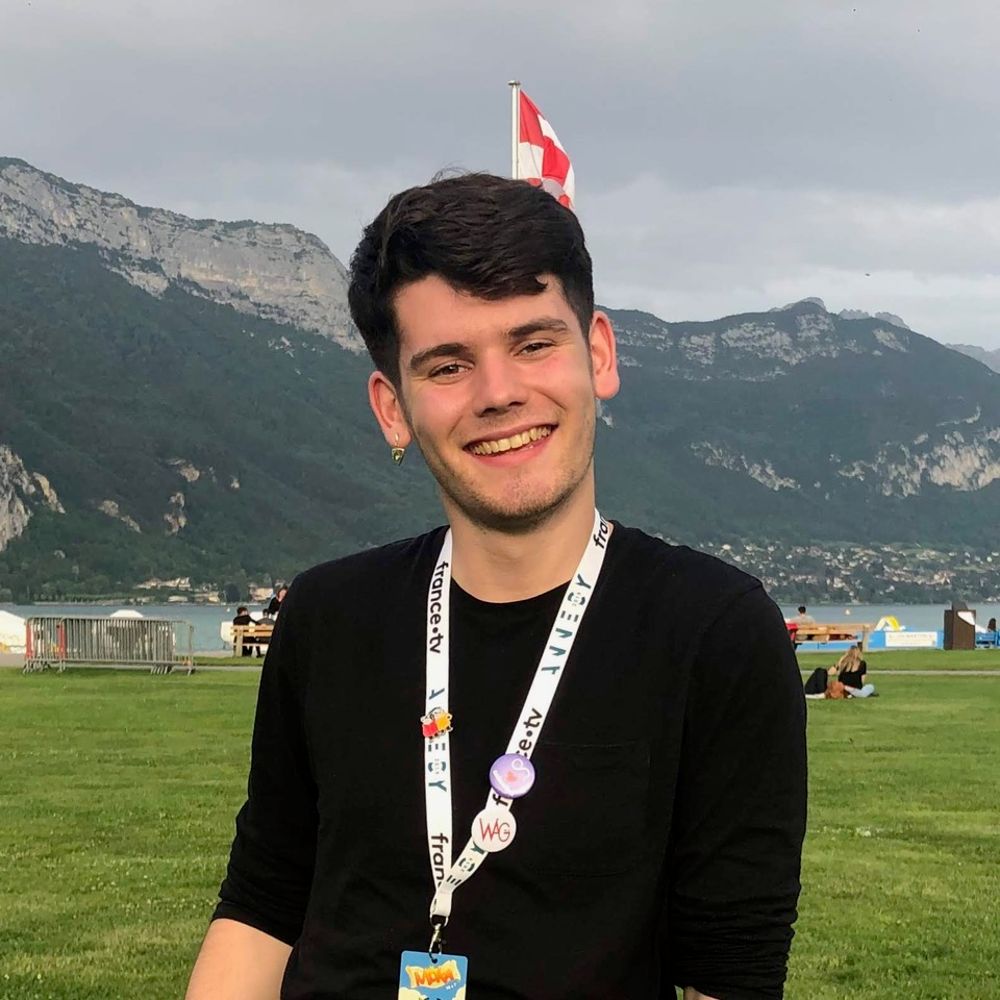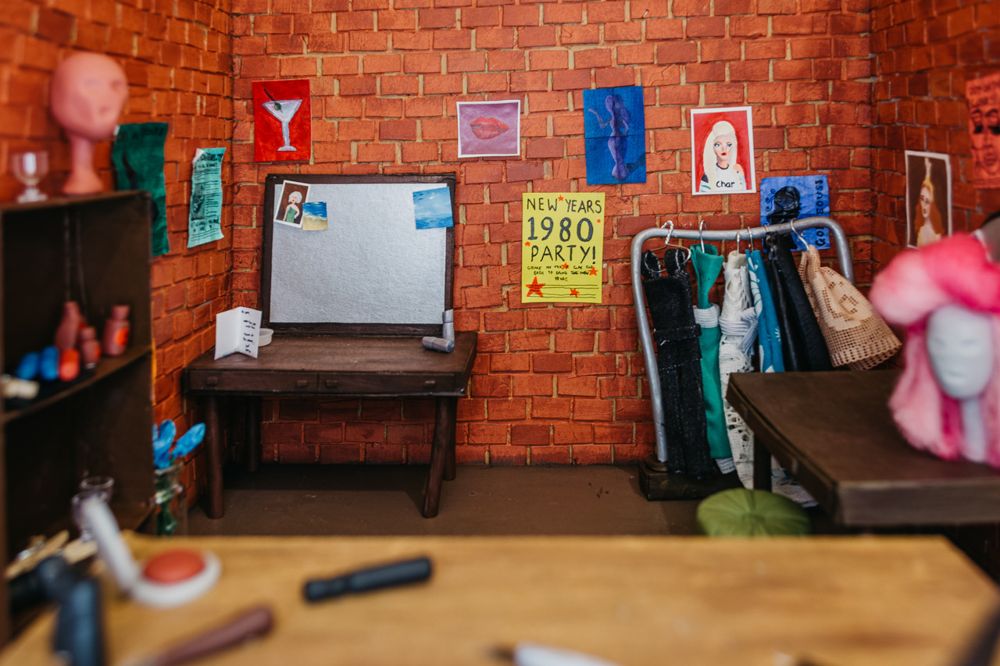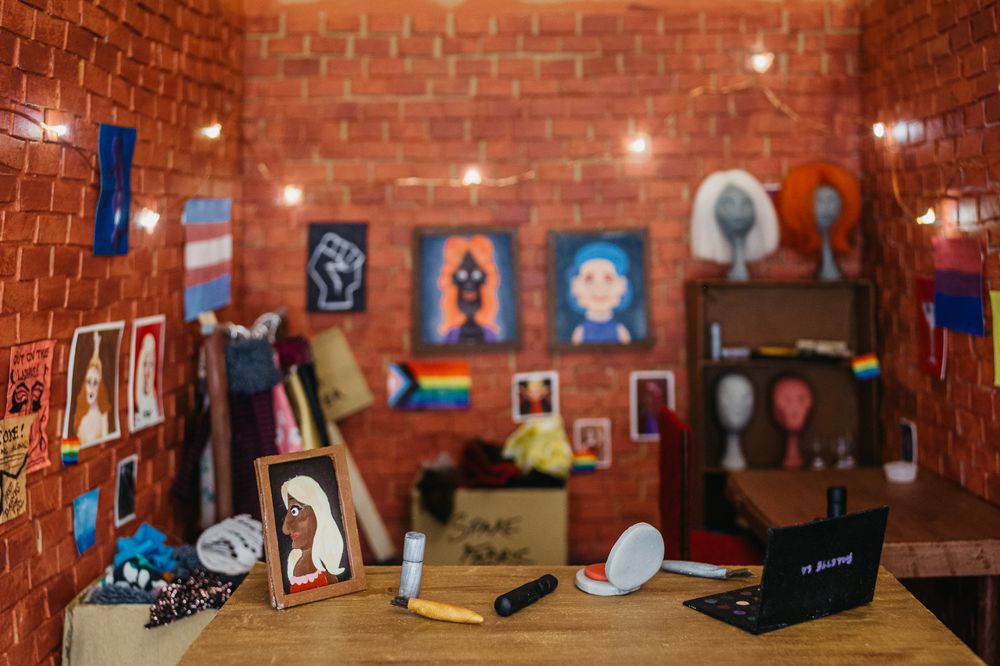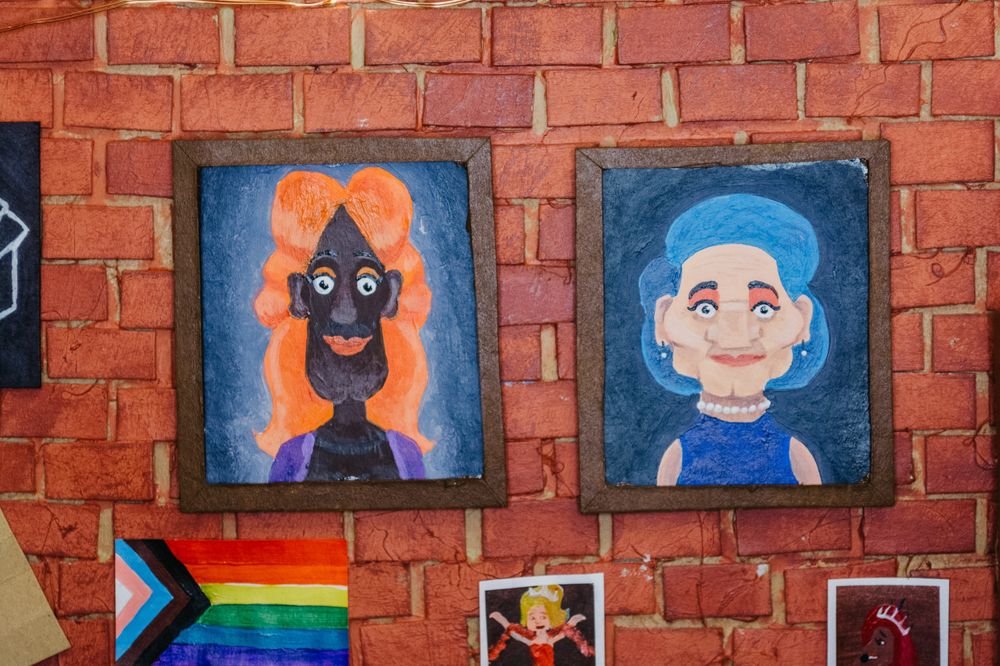We had the chance to talk to London-based animation director Samuel Mark Player who recently finished his poignant and powerful short The Queen’s Heart. Player made the stop-motion short working from home during the 2020-2021 lockdown period in the U.K. He says, “I made this short about drag, poignant moments in queer history, gender identity and the importance of chosen family, and the story means a lot to me.” Here is more from the talented 23-year-old creator:

Animag: Can you tell us a little bit about the inspiration for your short?
Samuel Mark Player: The inspiration for The Queen’s Heart came from the rich history of the LGBTQ+ community and all the amazing drag queens, queer people and the transgender community who fought for the rights we have today. It is an original story, but I took inspiration from the lives of people like Marsha P. Johnson and Sylvia Rivera, who lived through events like the Stonewall Riots which were hugely influential in the progression of LGBTQ+ rights. I was also really inspired as well by more modern representations of our history and community, like the hugely diverse Pose and It’s a Sin.
Did you study animation at school?
Yes – I graduated from The Arts University Bournemouth in 2019 with a degree in Animation Production, which was great as it allowed me to study different forms of animation while homing in on the skills I wanted to develop. I creatively produced that year’s Stop Motion Grad Film Undead Indeed and learned a lot about how to make an animated short, particularly with a small budget and big aspirations – which is this film all over!
When did you decide to pursue animation?
For as long as I can remember I have been interested in animating. As a kid, I would use the family camcorder to make little animations with my action figures or LEGO, and as I got older, I realized that people actually did this for a job?! So, I knew that it was what I wanted to do. Who wouldn’t want to spend their time creating their own worlds and giving them life?!

Why did you choose stop-motion animation as your medium?
In my eyes, stop-motion is the most accessible form of animation to anyone. All you need is a camera and a subject, and anyone can do it! I love how tangible it is; everything on screen had to be made by someone, moved by someone, and it’s all real. I think that this gives another layer of depth to the story you’re telling and really brings it to life. I think that’s also a reason that the film is resonating with people, because it’s telling an important story through a poignant art form.
How long did it take you to finish your short and how much did it cost?
In all, the film took about 14 months to complete from start to finish. During the first U.K. lockdown I worked on it full-time, and since then I have been working on it during any free time I could find. I managed to make the film for less than £1,000 (about $1,400) and I was fortunate enough to run an online fundraiser to help raise the money for the original score. It was supported by many members of the LGBTQ+ and stop-motion communities, which really meant a lot to me. Beyond the score, everything else was self-funded.
Which animation tools did you use?
I animated the film using Dragonframe, which I love to use as it is so easy to go back through the frames you’ve taken and make sure that the flow of motion is exactly how you want it. I created my own X-sheets using Excel and did the post-production editing in After Effects and Premiere Pro.

What are you proudest of?
The thing I’m most proud of with the film is how it has already resonated with the LGBTQ+ community. I told this story because it is one that I care deeply about, and especially in the light of some of the recent trailblazing shows that I mentioned, it is really wonderful to hear stories of how other people are relating to and enjoying the short. We all have a responsibility to make sure that we educate ourselves on our history, and so to get to combine this with my love for animation and storytelling is something I am really quite proud of.
What was your biggest challenge?
My biggest challenge was definitely the scope of the project and managing to do it all from home, and almost entirely by myself. I was really grateful for the help of other artists during pre-production while designing concepts for the film, but the nature of stop-motion is that everything needs to be physically built and animated, and because I worked on the film almost entirely during lockdown, I had to do it all myself. Everything you see on-screen was sculpted, constructed and animated by me — and with over 5,000 frames, it was definitely a challenge!
What do you hope audiences will get out of the short?
I want people to be able to watch this film and see what the LGBTQ+ community went through to get to where we are today, to get a better understanding of the people that fought for our rights, and what they lost along the way. There was so much love in a community that received so much hate. And, I hope people use my piece to help them learn about the amazing pioneers that came before us. I hope that it may inspire people to educate themselves, to share it with a friend or family member, to learn something and maybe be inspired to learn more.

Can you tell us about the short’s powerful music?
I knew that I wanted the score for this film to be an original piece with a central theme that changed and developed with the story. It needed to be light and fun during the happy moments, and equally dark and somber when the story needed it to be. I collaborated with an incredible composer called AJ Churchill (www.ajchurchill.com) who perfectly understood what I was looking for. The music is just as important as the visuals when it comes to telling the story, so I was thrilled with how AJ’s beautiful score helped me tell mine, and I am so glad to hear that people have been enjoying it, too!
Who are your animation heroes?
Nick Park has always been one of my animation heroes. The fact that he started his career making his own short film and telling the stories he wanted to tell is so inspiring to me. All of the characters he creates are so captivating and the way he balances humor without subtracting from the emotional moments is incredible. I also adore the work of Glen Keane; the way he animated has such a flow and his characters have so much life! His sketches are so beautiful and the way he uses loose lines to create the shapes and form of what he is animating is such an art in itself. It is almost a shame his original sketches aren’t what end up on screen!
What was the biggest lesson you learned as you made this short?
The biggest lesson I’ve learnt while making The Queen’s Heart is that you can make some of your best work while facing creative constraints. I made this film at a time where no art supply shops were open, and we were not even able to leave our homes. I had to make things with what I had to hand, learn to do things I couldn’t do before and, ultimately, I think that is what has made this short so special to me. I’m excited to take what I have learnt from this film and push it further in my future projects.









 Win 'The Art of DreamWorks Dog Man'!
Win 'The Art of DreamWorks Dog Man'! 

